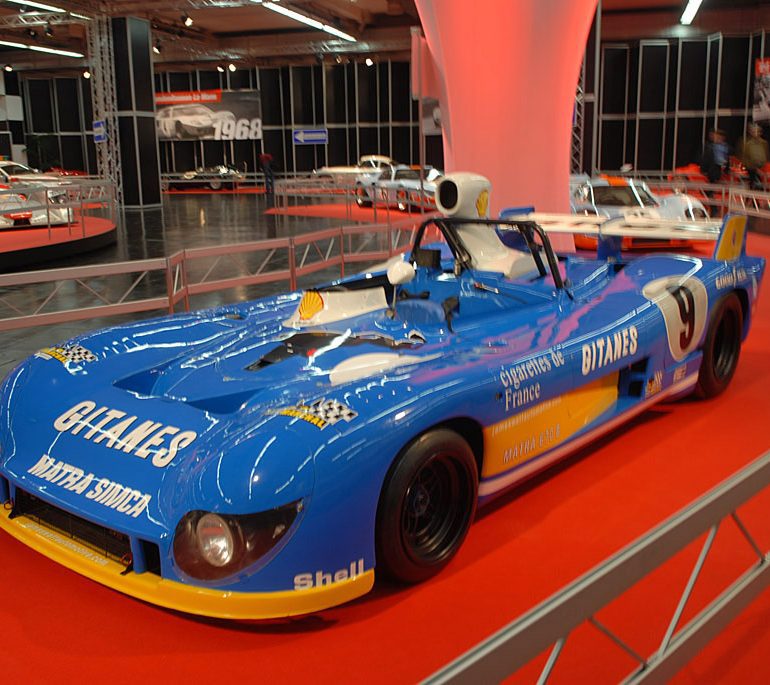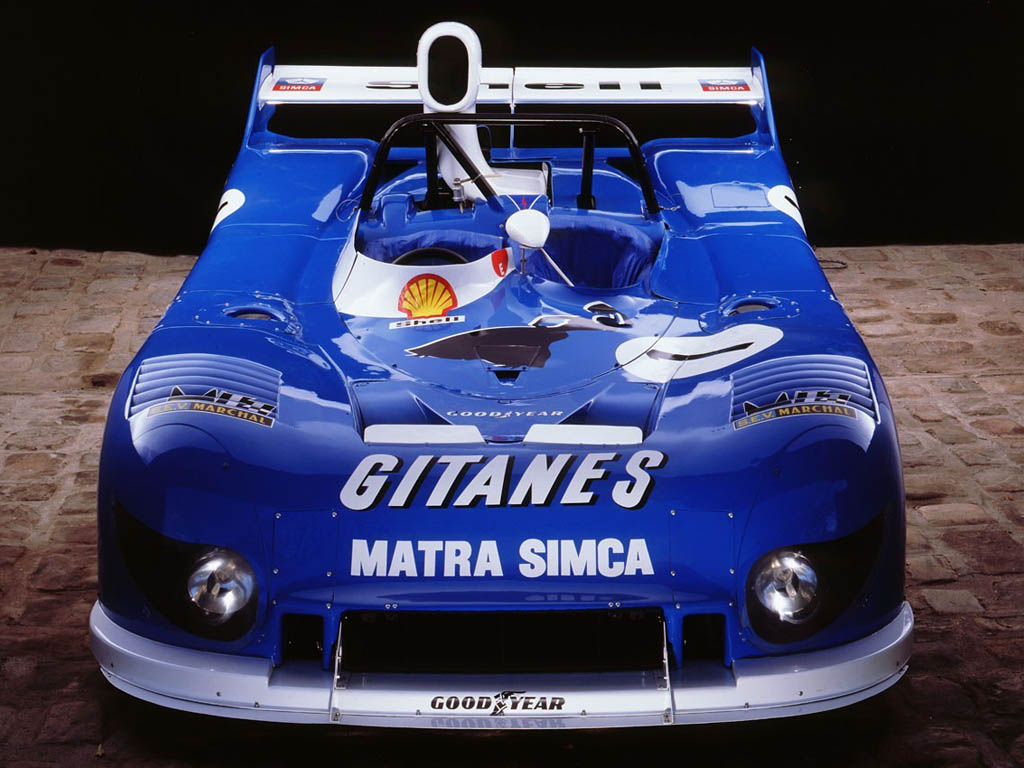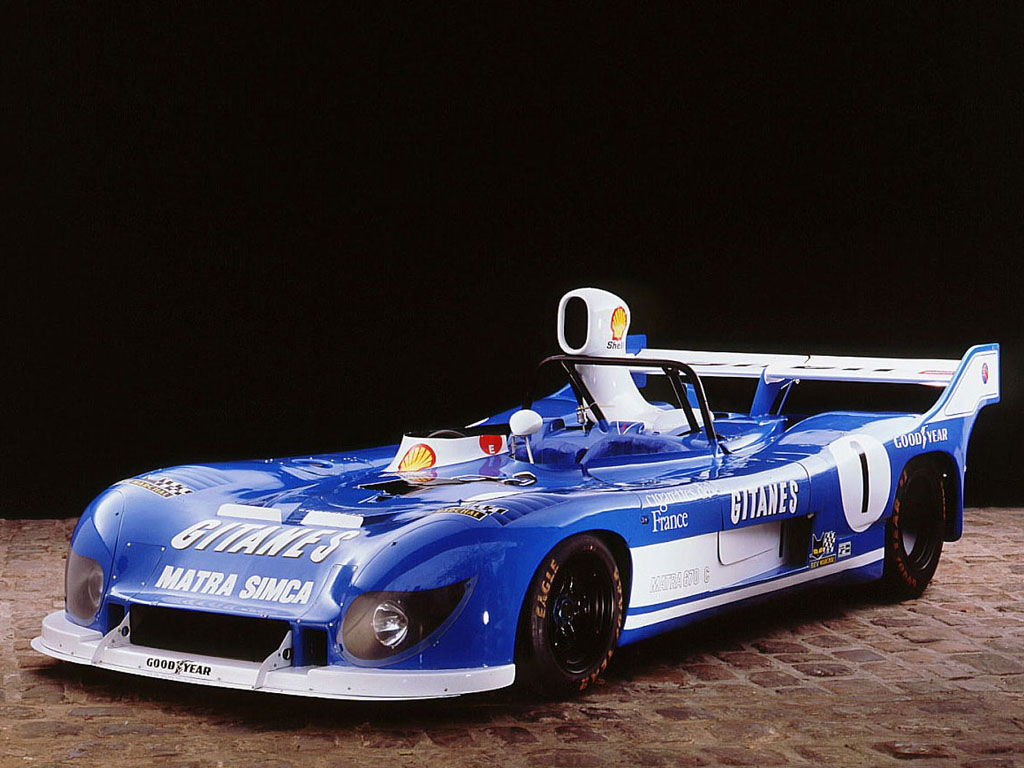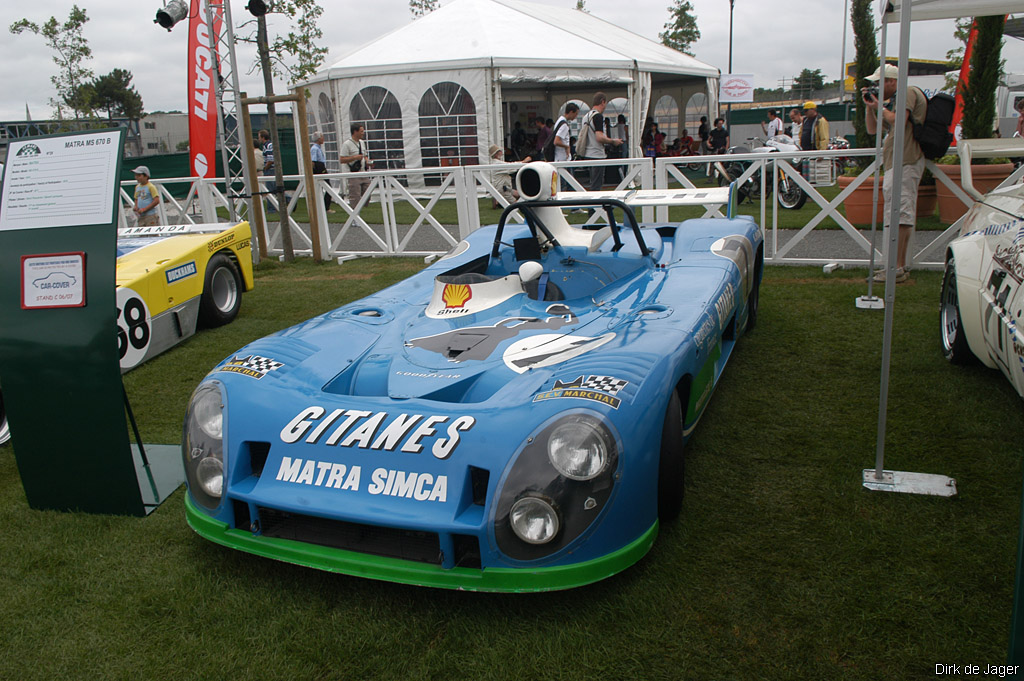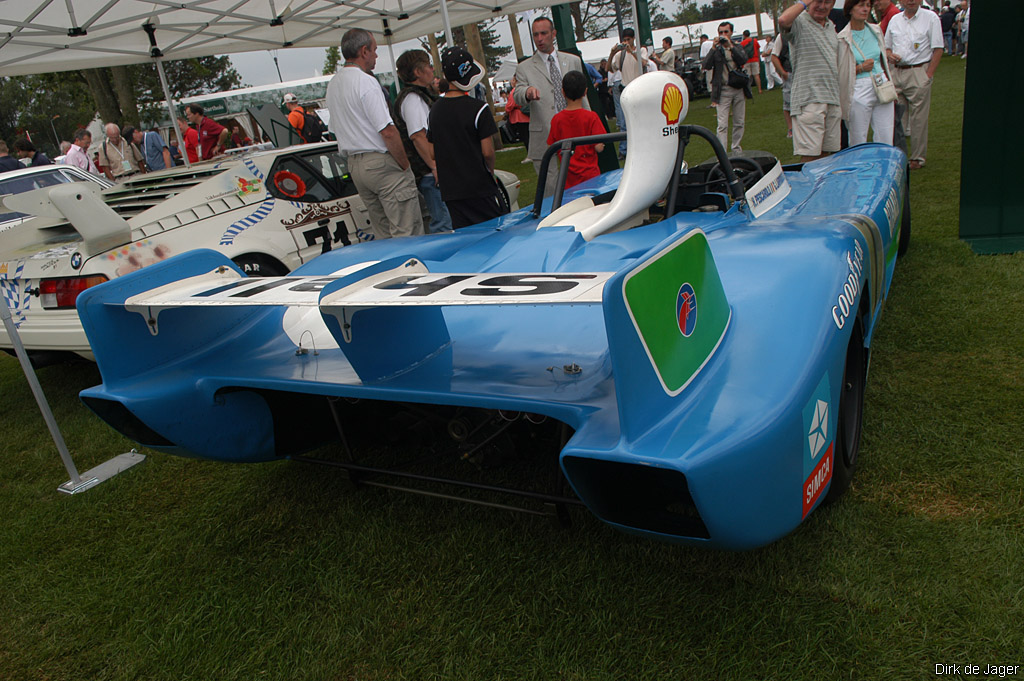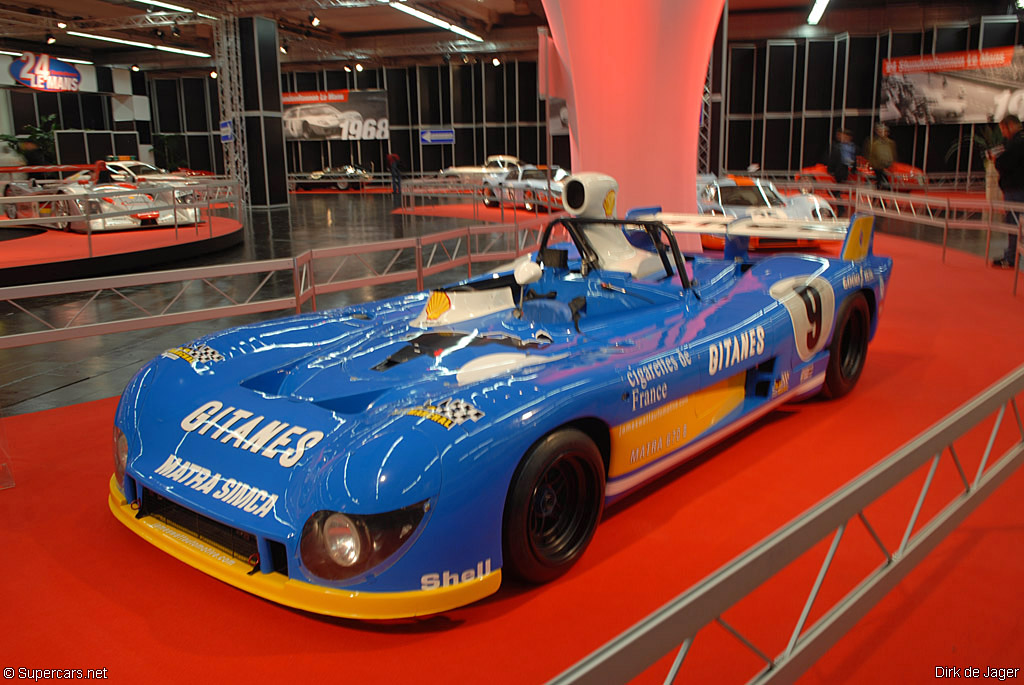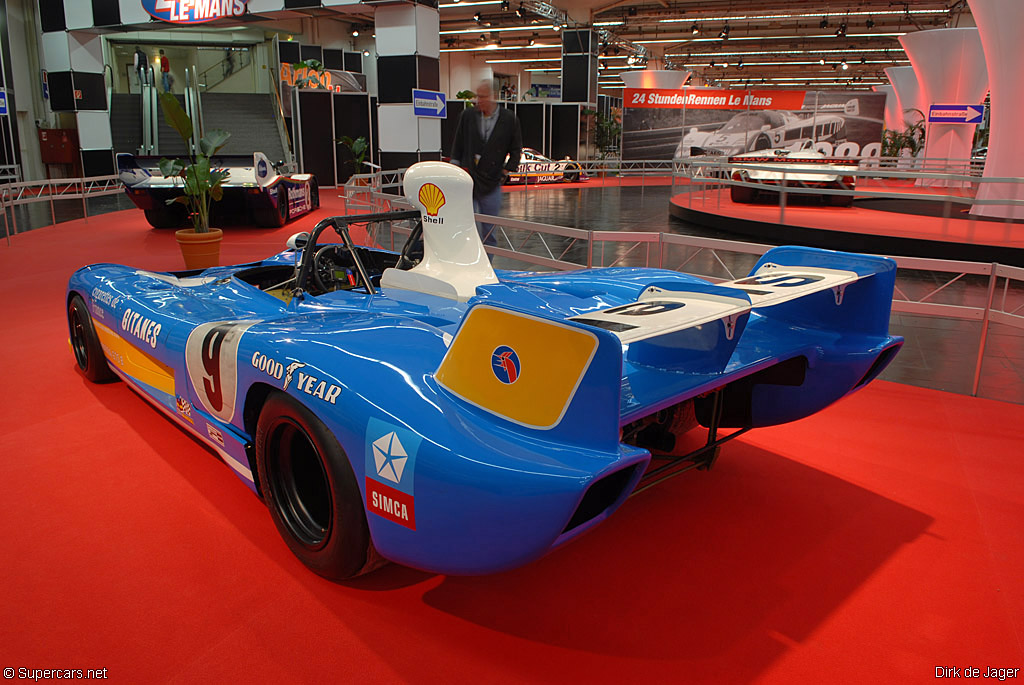1973 Matra-Simca MS 670B
This magnificent all-French sports-prototype is the actual car in which Henri Pescarolo/ Gerard Larrousse scored a resoundingly popular home victory in the motor sporting world’s most important endurance race – the Le Mans 24-Hours.
Matra fielded four cars in that year’s Grand Prix d’Endurance, and found themselves confronted by a works Ferrari team of three 3-litre flat-12 engined 312PB cars and a pair of Cosworth-Ford V8-powered Gulf Mirage M6s.
The Shell-sponsored Matra-Simca team had won the great race with drivers Henri Pescarolo/ Graham Hill victorious the previous season, using the prototype MS670 car. During that year, Matra had contested only Le Mans amongst sports car races, while taking part in its final frontline season in Formula 1 with its latest iteration MS120 single-seater cars.
Having abandoned Formula 1 in favour of an all-out assault upon the World Championship of Makes sports-prototype series for 1973, the team found time despite its hectic new programme of 1,000Km sports-car races to build three brand-new Barquette chassis for Le Mans. These were based upon their contemporary MS670 monocoque-chassised design, powered by their well-developed, powerful and reliable 3-litre 4-cam Type MS72 V12 engine.
This latest MS670B chassis specification featured 13-inch diameter wheels in place of the preceding 15-inch size, with the rear suspension geometry modified to match. The body line was also revised and lowered, while the smaller diameter wheels also dictated a move for the rear brake discs which were taken inboard to new positioning on each side of the transaxle casing.
In search of further enhanced reliability, the V12 engines for Le Mans had been given a lower rev limit of 10,500rpm and had been de-tuned to around 450bhp.
The MS670B-series cars were also equipped with a new Porsche-built, Matra-specified gearbox in place of the team’s normal choice of Hewland and ZF transmissions which, it was feared, might not survive the rigours of 24-Hour racing at Le Mans. Solid brake discs replaced the ventilated type used elsewhere during the racing season, but Le Mans was not regarded as placing a premium upon braking performance, other than its reliability.
Le Mans Victory
All-French crews were selected to drive the cars that season РJean-Pierre Beltoise/ Fran̤ois Cevert leading the team (race #10) with Henri Pescarolo/ Gerard Larrousse (#11) and Jean-Pierre Jabouille/ Jean-Pierre Jaussaud (#12) in the other pair of MS670Bs, while an older MS670 (#14) was entrusted to Patrick Depailler/ Bob Wollek, this car being in standard 1973 season endurance trim other than having the new Porsche-made gearbox, but without the inboard rear brakes upon its cheeks.
The Ferrari 312PBs of Merzario/ Pace and Ickx/ Redman finished practice with the two fastest lap times, while Beltoise/ Cevert’s Matra MS670B set third fastest time at 3mins 39.9secs.
The three Ferrari sports-prototypes would lead the 24-Hour race for some considerable time, but their spearhead team – Jacky Ickx and Brian Redman – were forced into retirement after 22 hours. Until that moment their ailing Ferrari had been challenging the Pescarolo/ Larrousse Matra for the lead. After Ickx/ Redman’s enforced retirement, ‘MS670B-02’ here emerged in the decisive lead which the hugely experienced French pairing were able to maintain until the finish that Sunday afternoon.
Bonham’s Sale of MS670B-2
At their Les Grandes Marques a Monaco in 2005, Bonhams sold the 24-hours Race-Winning 670B. The top bid was 1 000 000 EU (1 260 097 USD).
Story by Bonhams 1793 Limited & Supercars.net
In Detail
| submitted by | Richard Owen |
| engine | MS72 V12 |
| fuel feed | DOHC |
| power | 335.6 kw / 450 bhp @ 10 500 rpm |
| bhp/weight | 655.98 bhp per tonne |
| front brakes | Discs |
| f brake size | mm / in |
| rear brakes | Inboard Discs |
| r brake size | mm / in |
| curb weight | 686 kg / 1512 lbs |
| transmission | Porsche-Built |
| gear ratios | :1 |


